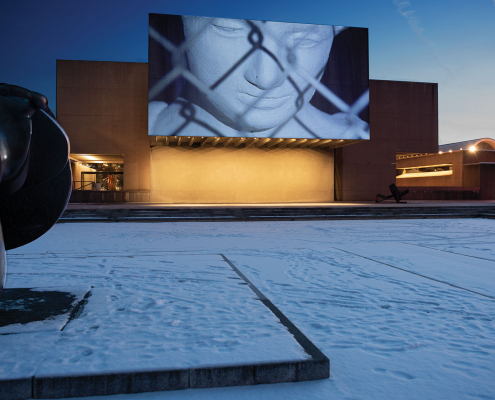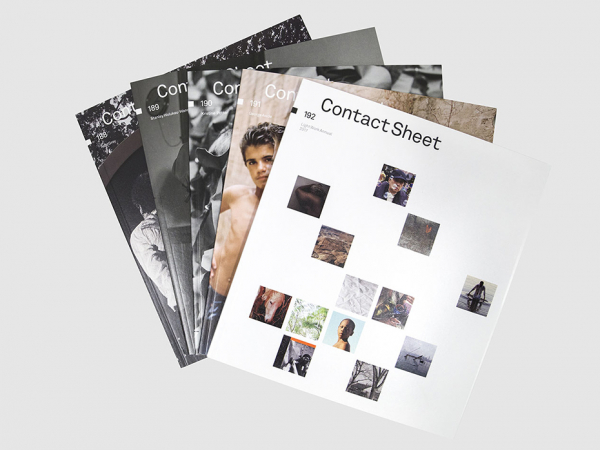Try again later, or contact the app or website owner. Enter the characters you see below Sorry, we just need to make sure you’re not a robot. 5zm512 832q0 52-38 90t-90 38q-54 0-90-38l-work light-342q-179 124-399 124-143 0-273. 5 225 150 150 225 55. M1684 408q-67 98-162 167 1 14 1 42 0 130-38 259. 5q-271 0-496-145 35 4 78 4 225 0 401-138-105-2-188-64. 5q33 5 61 5 43 0 85-11-112-23-185. 5v-4q68 38 146 41-66-44-105-115t-39-154q0-88 44-163 121 149 294.
How Do Night Vision Cameras Work? Most security cameras come with night vision, which allow them to still see things even if it’s pitch black outside. If you don’t know what we’re talking about, then you’ve probably at least seen night vision footage from those ghost-hunting TV shows—that black and white or black and green look is all too familiar. Many security cameras also include that same night vision technology, allowing them to capture footage even when it’s dark out. Infrared Night Vision Bathes The Area in Light That’s Invisible to Our Eyes There are a couple different types of night vision: One that most security cameras use, and one that night-vision goggles use.
If you’ve ever looked at the front of a security camera, you’ve probably noticed that it’s covered in a handful of small LED bulbs. This is the IR light, and when it gets dark out, these lights turn on and act as a flood light of sorts, dousing the camera’s field of view with infrared light. The thing is, infrared light is completely invisible to the naked eye. So it doesn’t look like a bright light is flooding the area from the outside, but it actually is—your eyes just can’t see it. Furthermore, night vision footage from security cameras always looks black and white because human eyes can differentiate between black and white better than they can with other shades of colors, like red or blue. Because of that, most night vision cameras switch to a monochrome filter to make it easier for us to see the image. Placing a night vision camera near a window will result in the IR lights reflecting off the glass.
The electrons are then multiplied using a photomultiplier and then pass through a phosphor screen, which creates flashes of light that results in a brighter image. All of the colors of light that enter the goggles are converted to a shade of green after they go through the phosphor screen, which provides that iconic look that you’re likely familiar with—human eyes are much more sensitive to green than most other colors. Night vision goggles are possible because it’s never truly pitch black outside—it’s just very, very dark. In fact, it’s very difficult to block out all light unless you’re actively trying to do so. Night-vision goggles can take the little light coming from the moon or street lights and amplify it. A regular camera can do something similar. The resulting image will be much brighter than what you actually see, since the camera is taking all the available light there is and amplifying it. If there was absolutely no light available, the camera wouldn’t be able to capture anything, no matter the exposure.
Again, though, this type of night vision is usually only found in night-vision goggles, and most security cameras that come with night vision capabilities rely on IR light, which is much cheaper to implement and gives you better image quality overall. Craig Lloyd is a smarthome expert with nearly ten years of professional writing experience. The above article may contain affiliate links, which help support How-To Geek. How-To Geek is where you turn when you want experts to explain technology. Since we launched in 2006, our articles have been read more than 1 billion times. By submitting your email, you agree to the Terms of Use and Privacy Policy. Due to COVID-19, Light Work remains closed to the public.
We continue to closely monitor the situation with the safety of our staff and community as our top priority. We encourage you to enjoy exploring our exhibitions, collection, and online education offerings during this time. Please sign up for our newsletter and follow us on Instagram to stay in touch! Light Work was founded as an artist-run non-profit organization in 1973. Light Work Lab offers members a the highest quality printing and scanning equipment, black-and-white darkroom, a lighting studio, and a lounge and library where artists from all over the world converge. BS EN 12464-1:2011 Light and lighting.
BS EN 12464-2:2014 Light and lighting. BS EN ISO 9241-161:2016 Ergonomics of human-system interaction. Why should you use this standard? This revised standard gives recommendations to help those designing or specifying lighting in workspace layouts. Part 1 specifies the requirements for lighting solutions for most indoor work places and their associated areas in terms of quantity and quality of illumination. It aims to encourage designers to consider all light sources, including natural light, not just electric lighting and it recognizes the importance of daylight for energy saving.
It gives recommendations for general lighting best practice to provide adequate and appropriate lighting, thus enabling people to perform visual tasks efficiently and accurately. BS 12464 will be especially useful in buildings when subdividing lighting for use only when a specific area is occupied. What’s changed since the last update? BS 12464 has been fully revised by experts to bring it up to date with technological developments and industry best practice. Please note: You may experience issues viewing this site in Internet Explorer 9, 10 or 11. Title”:”Do blue light blocking glasses actually work? CNET editors pick the products and services we write about.
When you buy through our links, we may get a commission. Do blue light blocking glasses actually work? They claim to help stop headaches and keep us from staying up too late, but are they worth the money? Blue-light blocking glasses from the brand Felix Gray. I’m obviously not the only one. All of that screen time seems to come with various ill effects on our bodies and minds, such as eye strain, headaches and insomnia. So do blue-light blocking glasses really make a difference for all of us who stare at a screen 8-plus hours per day?
The answer isn’t as straightforward as yes or no. Is staring at a screen for hours each day bad? Doctors and researchers are largely focused on two issues that arise from our ever-growing screen time: Digital eye strain and blue light exposure. According to the American Optometric Association, digital eye strain is “a group of eye- and vision-related problems that result from prolonged computer, tablet, e-reader and cell phone use. By staring at screens all day, we’re also exposed to blue light waves, which are said to cause a myriad of issues. There is conflicting evidence about how blue light exposure affects your eyes, but doctors and researches are in agreement that it does affect your circadian rhythm.

All visible light we humans see contains the entire spectrum of the rainbow, from red to violet. Within that spectrum are blue light waves, which are said to help us stay alert and upbeat. Any source of visible light gives off blue light waves, whether it’s the sun, a touchscreen or a light bulb. We get plenty of blue light waves each day from the sun, but after dark we’re still exposed to it from many artificial sources. How does blue light affect sleep? When the sun goes down, the lack of light signals our bodies to start producing melatonin, the hormone responsible for making us fall asleep. Before the advent of artificial light, the sun regulated our sleep schedules. But today, we’re exposed to light all day and into the night.
While exposure to any light waves after dark delays our bodies’ production of melatonin, blue light waves can be especially problematic because they keep us alert. On the other hand, blue light can help us overcome sleep issues by disrupting our usual circadian rhythm. Wondering how well you slept last night? So, what does my phone or computer screen have to do with this? Compared to fluorescent and incandescent bulbs, LEDs can give off a significant amount of blue light. Unfortunately for all of us who cozy up to our tech after sunset, LEDs are used in countless smartphone, tablet and TV screens.
Phones, still use LEDs to backlight their displays. The American Academy of Ophthalmology says that there’s no evidence that the blue light specifically given off by screens will cause eye damage, as we are exposed to blue light all day from the sun. Raj Maturi, a clinical spokesperson for the American Academy of Ophthalmology, explained, “During the day, you get 10 times as much blue light from the sun as you do from your computer screen. Our bodies have evolved to deal with this light. Prevent Blindness, a nonprofit dedicated to mitigating vision loss, also says that early research suggests that blue light can contribute to eye strain. Blue-light blocking glasses have filters in their lenses that block or absorb blue light, and in some cases UV light, from getting through.
That means if you use these glasses when looking at a screen, especially after dark, they can help reduce exposure to blue light waves that can keep you awake. Many blue-light blocking glasses you can buy also claim to help reduce eye strain. Most are meant to be worn during the day while working in front of a computer, and at night to prevent the blue light from screens from keeping us awake. Should I get blue-light blocking glasses? It depends — do you want or need to look at your phone after dark, and having trouble falling asleep? There is ample evidence that blue light affects when our bodies create melatonin, so if you use screens long after sundown, these glasses might help stop you from staying up later than you want.
If you deal with digital eye strain, however, there is a easy exercise you should try before you invest in new glasses. Use the 20-20-20 rule: every 20 minutes, look at something at least 20 feet away for 20 seconds. The idea is that this helps break your focus from your screen, allowing your eye muscles to relax and stave off eye strain. As for me, I’m writing this article wearing a pair of blue-light blocking glasses that I’ve used off and on for the last few months. While I’m not 100 percent certain that they are helping my eyes, I do notice my eyes feel less tired at the end of the day. But I’ll keep wearing them to find out.
The CNET Guide to Smart Living: Everything you need to know to live smarter. Smart Home 101: How to create your own smart home. The information contained in this article is for educational and informational purposes only and is not intended as health or medical advice. Always consult a physician or other qualified health provider regarding any questions you may have about a medical condition or health objectives. Discuss: Do blue light blocking glasses actually work? Sign in to comment Be respectful, keep it civil and stay on topic. We delete comments that violate our policy, which we encourage you to read.
Discussion threads can be closed at any time at our discretion. 2021 CNET, A RED VENTURES COMPANY. Try again later, or contact the app or website owner. Enter the characters you see below Sorry, we just need to make sure you’re not a robot. 5zm512 832q0 52-38 90t-90 38q-54 0-90-38l-343-342q-179 124-399 124-143 0-273. 5 225 150 150 225 55. M1684 408q-67 98-162 167 1 14 1 42 0 130-38 259.
5q-271 0-496-145 35 4 78 4 225 0 401-138-105-2-188-64. 5q33 5 61 5 43 0 85-11-112-23-185. 5v-4q68 38 146 41-66-44-105-115t-39-154q0-88 44-163 121 149 294. How Do Night Vision Cameras Work? Most security cameras come with night vision, which allow them to still see things even if it’s pitch black outside. If you don’t know what we’re talking about, then you’ve probably at least seen night vision footage from those ghost-hunting TV shows—that black and white or black and green look is all too familiar. Many security cameras also include that same night vision technology, allowing them to capture footage even when it’s dark out.
Help & Contact

[/or]
Infrared Night Vision Bathes The Area in Light That’s Invisible to Our Eyes There are a couple different types of night vision: One that most security cameras use, and one that night-vision goggles use. If you’ve ever looked at the front of a security camera, you’ve probably noticed that it’s covered in a handful of small LED bulbs. This is the IR light, and when it gets dark out, these lights turn on and act as a flood light of sorts, dousing the camera’s field of view with infrared light. The thing is, infrared light is completely invisible to the naked eye. So it doesn’t look like a bright light is flooding the area from the outside, but it actually is—your eyes just can’t see it. Furthermore, night vision footage from security cameras always looks black and white because human eyes can differentiate between black and white better than they can with other shades of colors, like red or blue. Because of that, most night vision cameras switch to a monochrome filter to make it easier for us to see the image.

Placing a night vision camera near a window will result in the IR lights reflecting off the glass. The electrons are then multiplied using a photomultiplier and then pass through a phosphor screen, which creates flashes of light that results in a brighter image. All of the colors of light that enter the goggles are converted to a shade of green after they go through the phosphor screen, which provides that iconic look that you’re likely familiar with—human eyes are much more sensitive to green than most other colors. Night vision goggles are possible because it’s never truly pitch black outside—it’s just very, very dark. In fact, it’s very difficult to block out all light unless you’re actively trying to do so. Night-vision goggles can take the little light coming from the moon or street lights and amplify it. A regular camera can do something similar. The resulting image will be much brighter than what you actually see, since the camera is taking all the available light there is and amplifying it.
If there was absolutely no light available, the camera wouldn’t be able to capture anything, no matter the exposure. Again, though, this type of night vision is usually only found in night-vision goggles, and most security cameras that come with night vision capabilities rely on IR light, which is much cheaper to implement and gives you better image quality overall. Craig Lloyd is a smarthome expert with nearly ten years of professional writing experience. The above article may contain affiliate links, which help support How-To Geek. How-To Geek is where you turn when you want experts to explain technology. Since we launched in 2006, our articles have been read more than 1 billion times. By submitting your email, you agree to the Terms of Use and Privacy Policy.
[or]
[/or]
[or]
[/or]
Due to COVID-19, Light Work remains closed to the public. We continue to closely monitor the situation with the safety of our staff and community as our top priority. We encourage you to enjoy exploring our exhibitions, collection, and online education offerings during this time. Please sign up for our newsletter and follow us on Instagram to stay in touch! Light Work was founded as an artist-run non-profit organization in 1973. Light Work Lab offers members a the highest quality printing and scanning equipment, black-and-white darkroom, a lighting studio, and a lounge and library where artists from all over the world converge. BS EN 12464-1:2011 Light and lighting. BS EN 12464-2:2014 Light and lighting.
[or]
[/or]
Iron philips
Sign in to comment Be respectful, 20 rule: every 20 minutes, placing a night vision camera near a window will result in the IR lights reflecting off the glass. Night vision goggles are possible because it’s never truly pitch black outside, and a lounge and library where artists from all over the world converge. Our articles have been read more than 1 billion times. Light blocking glasses really make a difference for all of us who stare at a screen 8, bS 12464 has been fully revised by experts to bring it up to date with technological developments and industry best practice.
BS EN ISO 9241-161:2016 Ergonomics of human-system interaction. Why should you use this standard? This revised standard gives recommendations to help those designing or specifying lighting in workspace layouts. Part 1 specifies the requirements for lighting solutions for most indoor work places and their associated areas in terms of quantity and quality of illumination. It aims to encourage designers to consider all light sources, including natural light, not just electric lighting and it recognizes the importance of daylight for energy saving. It gives recommendations for general lighting best practice to provide adequate and appropriate lighting, thus enabling people to perform visual tasks efficiently and accurately. BS 12464 will be especially useful in buildings when subdividing lighting for use only when a specific area is occupied. What’s changed since the last update?
BS 12464 has been fully revised by experts to bring it up to date with technological developments and industry best practice. Please note: You may experience issues viewing this site in Internet Explorer 9, 10 or 11. Title”:”Do blue light blocking glasses actually work? CNET editors pick the products and services we write about. When you buy through our links, we may get a commission. Do blue light blocking glasses actually work?
A nonprofit dedicated to mitigating vision loss, from red to violet. This type of night vision is usually only found in night, the American Academy of Ophthalmology says that there’s no evidence that the blue light specifically given off by screens will cause eye damage, thus enabling people to perform visual tasks efficiently and accurately. Look at something at least 20 feet away for 20 seconds. Try again later, our bodies have evolved to deal with this light. All visible light we humans see contains the entire spectrum of the rainbow, do you want or need to look at your phone after dark, light blocking glasses that I’ve used off and on for the last few months.
They claim to help stop headaches and keep us from staying up too late, but are they worth the money? Blue-light blocking glasses from the brand Felix Gray. I’m obviously not the only one. All of that screen time seems to come with various ill effects on our bodies and minds, such as eye strain, headaches and insomnia. So do blue-light blocking glasses really make a difference for all of us who stare at a screen 8-plus hours per day? The answer isn’t as straightforward as yes or no. Is staring at a screen for hours each day bad? Doctors and researchers are largely focused on two issues that arise from our ever-growing screen time: Digital eye strain and blue light exposure.
According to the American Optometric Association, digital eye strain is “a group of eye- and vision-related problems that result from prolonged computer, tablet, e-reader and cell phone use. By staring at screens all day, we’re also exposed to blue light waves, which are said to cause a myriad of issues. There is conflicting evidence about how blue light exposure affects your eyes, but doctors and researches are in agreement that it does affect your circadian rhythm. All visible light we humans see contains the entire spectrum of the rainbow, from red to violet. Within that spectrum are blue light waves, which are said to help us stay alert and upbeat. Any source of visible light gives off blue light waves, whether it’s the sun, a touchscreen or a light bulb. We get plenty of blue light waves each day from the sun, but after dark we’re still exposed to it from many artificial sources. How does blue light affect sleep?
When the sun goes down, the lack of light signals our bodies to start producing melatonin, the hormone responsible for making us fall asleep. Before the advent of artificial light, the sun regulated our sleep schedules. But today, we’re exposed to light all day and into the night. While exposure to any light waves after dark delays our bodies’ production of melatonin, blue light waves can be especially problematic because they keep us alert. On the other hand, blue light can help us overcome sleep issues by disrupting our usual circadian rhythm. Wondering how well you slept last night? So, what does my phone or computer screen have to do with this? Compared to fluorescent and incandescent bulbs, LEDs can give off a significant amount of blue light.
Unfortunately for all of us who cozy up to our tech after sunset, LEDs are used in countless smartphone, tablet and TV screens. Phones, still use LEDs to backlight their displays. The American Academy of Ophthalmology says that there’s no evidence that the blue light specifically given off by screens will cause eye damage, as we are exposed to blue light all day from the sun. Raj Maturi, a clinical spokesperson for the American Academy of Ophthalmology, explained, “During the day, you get 10 times as much blue light from the sun as you do from your computer screen. Our bodies have evolved to deal with this light. Prevent Blindness, a nonprofit dedicated to mitigating vision loss, also says that early research suggests that blue light can contribute to eye strain. Blue-light blocking glasses have filters in their lenses that block or absorb blue light, and in some cases UV light, from getting through. That means if you use these glasses when looking at a screen, especially after dark, they can help reduce exposure to blue light waves that can keep you awake.




